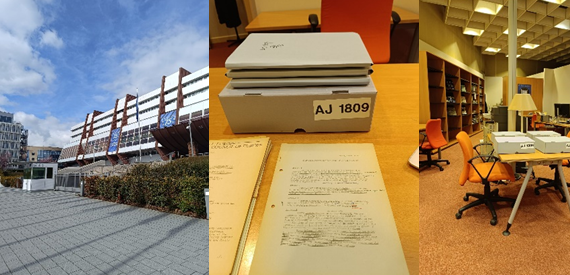Author: Catharina Lopes Scodro
Since decades, legal research has been changing. From looking to instruments to embracing people’s perceptions, it is increasingly incorporating social sciences methods to unpack interactions between law and society.
With this post I wish to share my own experience of the, small but surprising, impact of bringing these methods to legal research. In my PhD, I investigate the phenomenon of au pairing. Perfoming a Google search for ‘au pair’, mostly results in a list of agencies/websites which propose the path for a match with a host family. Nonetheless, depending on the given country of destination, you may see an official webpage including information for prospective au pairs. Within this short introduction, my aim is to present that the industry plays a relevant role in providing information on the scheme -and, in some instances, also in setting the rules but this is for another post.
Looking at these sources from a legal perspective, the immediate answer which arises is: are there instruments regulating the given au pairing scheme? And the answer is (unsurprisingly) yes! European scholars from different social sciences, when presenting the subject, normally mention the European Agreement on Au Pair Placement, from 1969, published by the Council of Europe. Another instrument that may catch your attention is the recent Researchers’ Directive, from 2016 in the scope of EU, that explicitly includes au pairs.
However, this post is not about au pairs, so I won’t present the content of these instruments any further. Still, I will present some of the research I carried out on one of those. When I realised the existence of both instruments – separated by almost 50 years – I started to wonder about the surrounding discussions regarding the topic of au pairing. These discussions may not result in other legal instruments, but they have the potential to present how mutations of a social phenomenon is being considered by institutions.
In this scenario, I wanted to delve further into the dynamics that permeate law-making – or how legal instruments are not made-in-a-vacuum. For that, I developed a systematic document analysis to collect and analyse documents (legal instruments, minutes from debates, reports, bills, resolutions, drafts etc.) from European institutions. As for the Council of Europe, I used the official portal resulting in more than 2000 results. Of these, 24 documents were only available in the physical version stored in the Archives. This leads me to the main aspect of my research I want to touch upon with the present post.
I contacted the Council of Europe, located in Strasbourg (France) to check the possibility on accessing these files, resulting in a two-day technical visit to their Archives Department in March 2024.

During this, I was able to access materials that were not available online but also with the physical version of some documents that I had already read in the digitised version. This led to several reflections, some of which will, I am certain, appear rather commonplace.
Archives – not restricted to legal instruments (law!) – may serve to identify how the group/institution approached certain topic during a period. For that, one can compare the different topics of discussion mobilised, arguments presented, responsible committees/branches on charge, etc. This practice helps to delve into contexts, making bridges between how the first discussions considered the subject, how it ended up in the regulation, and how “everyday norms” are constructed around it.
Somehow surprising, at least for a legal researcher with no prior experience with historical archival research, not all digitalised documents perfectly represent the physical version. As an illustration, I present the Summary Record of the First Meeting, Sub-Committee on Living and Working Conditions of Au Pair Girls (CE/SOC/Pair(66)1). The first version is digitalised[1] presenting in a ‘clean’ way the proposal of article. The second incorporates the sketch of the discussions. The physical version brings strikethrough to some words and expressions, as the word ‘employed’ when referring to au pairs changing it to ‘placed’. This is one indication of the attempts to dissociate the ‘au pair arrangement’ from a traditional employment relationship. In doing so, despite being the same documents, they do not have the same content nor tell the same story.

Finally, during the visit, I discovered a file that did not have one specific reference number. This was the brochure Au Pair’ in/en Europe (1966) which comprised three documents (recommendation, report, and official report of debates). The purpose was to organise them easily for lawmakers. In doing so, the brochure incorporated four images as well as a picture, which had not been present in any other material. This visual data revealed to be useful to identify how they portrayed au pairs – in terms of gender, nationality, race/ethnicity, body type, and even… fashion choices. As for the last, they did not portray au pairs using uniforms, again going in the direction of dissociating au pairs from traditional domestic workers. Therefore, being open to surprise findings was the last insight I carried back from this experience.

All in all, this made me reflect on the potential of papers to reveal society’s dynamism. Archives do reside in closed boxes, but they may help us to unpack ongoing phenomena while having in mind the “messy” process behind them. Seeing writing notes in official documents reminds us how these pieces are not made in a vacuum but have real human hands behind them (incorporating thus human interests, groups’ power dynamics, etc.), therefore having a place also in research project which are not labelled as “legal history” per se.
Before closing this post, I wish to thank the Archives Department of the Council of Europe one more time for their help and support before and during my visit.
[1] Available at: https://search.coe.int/archives?i=09000016806bc341